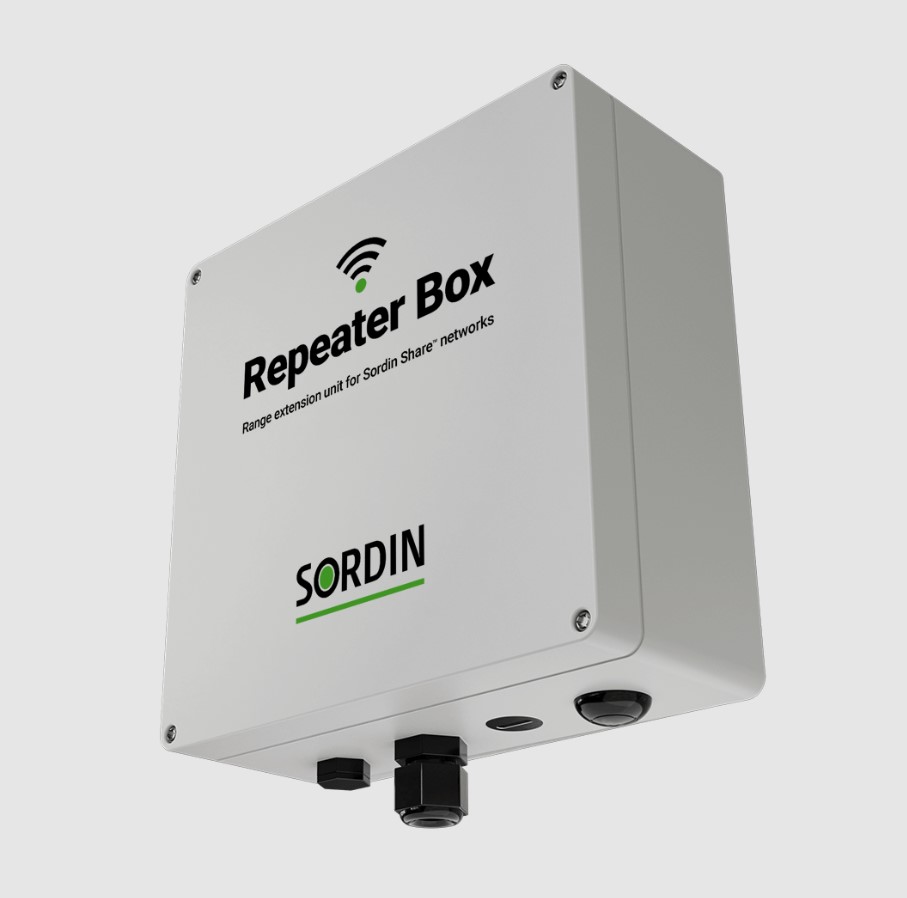In an era where connectivity is as essential as electricity, ensuring robust and uninterrupted network signals is paramount for both individuals and organizations. Enter the repeater box—a pivotal device designed to enhance and extend communication signals across a range of settings. Whether it’s bridging the gap in a remote area or ensuring seamless service in a densely built environment, repeater boxes play a crucial role.
A repeater box, at its core, functions by receiving weak signals, amplifying them, and then retransmitting the boosted signals to cover extended areas where direct communication lines falter. This process not only strengthens the signal’s reach but also its clarity and quality, making repeater boxes an indispensable tool in the arsenal of telecommunications, internet service providers, and any entity managing large-scale networks. The utility of these devices becomes increasingly evident as the world delves deeper into an interconnected digital age, where even a minor disruption in connectivity can lead to significant operational disruptions and lost opportunities.
The importance of repeater boxes transcends mere convenience; it is about enabling consistent and reliable communication which is the backbone of modern infrastructure. From facilitating high-speed internet in sprawling corporate campuses to supporting telecommunications in underground facilities, repeater boxes ensure that the digital pulse of society remains uninterrupted. As we continue to expand the boundaries of digital communication, the role of repeater boxes is set to become more critical, underpinning the growth and efficiency of modern communications across the globe.
Table of Contents
ToggleWhat is a Repeater Box?
A repeater box is an electronic device that receives a signal, amplifies it, and then retransmits it at a higher power level, allowing the signal to travel longer distances without degradation. These devices are essential in networks where distance can cause a significant loss of signal strength, making communication unreliable or impossible. Typically, a repeater box consists of amplifiers for boosting signal strength, filters to weed out noise, and complex circuitry designed to manage the integrity of the signal.
Types of Repeater Boxes and Their Uses
Repeater boxes come in various forms, each suited to specific types of data and transmission mediums:
- Optical Repeater: Used in fiber-optic networks, optical repeaters, also known as optical amplifiers, regenerate optical signals by converting them to electrical signals, processing them to restore their original quality, and then converting them back to optical signals. They are crucial in long-distance telecommunications and internet backbone connections that span cities, countries, or even continents.
- Radio Frequency (RF) Repeater: These are widely used in broadcasting and mobile network operations to extend the coverage area of a radio signal. RF repeaters capture weak radio signals, amplify them, and retransmit them over a broader area, helping in scenarios where geographical features like mountains or buildings obstruct the signal.
- Digital Repeater: Designed for digital signals, these repeaters ensure that the digital data, such as in Ethernet networks, can be transmitted over longer distances than typically possible. They regenerate the digital signal, correcting errors and enhancing signal integrity before retransmission.
Distinctions from Other Network Enhancing Devices
While repeater boxes might seem similar to other network devices like amplifiers and routers, they serve distinct functions:
- Amplifiers: While both amplifiers and repeaters boost the signal strength, amplifiers do so without discriminating between noise and actual data in the signal, often leading to a degradation of the signal quality over long distances. Repeaters, on the other hand, reconstruct and amplify the signal cleanly, improving both range and quality.
- Routers: Routers are more complex than repeaters. They direct data packets between different networks based on their IP addresses, managing traffic within a network by choosing the best routes for data transmission. Unlike repeaters, which only regenerate signals, routers analyze and direct the flow of network traffic and can connect different network architectures, such as linking local area networks (LANs) to the internet.
How Do Repeater Boxes Work?
Repeater boxes operate on a relatively straightforward principle but are crucial for maintaining effective communication over long distances. Here’s a detailed look at how these devices function:
Basic Principles of Signal Repeater Operation
- Receiving the Signal: The first step in the operation of a repeater box is capturing the existing, weak signal from the transmission medium, whether it be optical fibers, wireless transmission, or copper cables.
- Amplifying the Signal: Once the signal is received, the repeater box amplifies it. Amplification involves not just increasing the signal strength but also ensuring the fidelity of the information being transmitted is preserved. This is crucial because simply amplifying a degraded or noisy signal would only propagate errors further along the network.
- Transmitting the Signal: After amplification, the repeater retransmits the enhanced signal at a higher power level so that it can travel a longer distance without degradation. This retransmission helps bridge gaps where signal loss would typically occur, such as in remote areas or across physical barriers.
Diagram or Visual Representation of Signal Boosting
Imagine a simple diagram: at one end, there’s a fading signal waveform entering the repeater box. Inside the box, the waveform is shown being amplified, growing in amplitude without changing its original shape or form, and then exiting the box stronger and ready to travel further. This visual would typically include labels for input and output signals, possibly with annotations highlighting the amplification stage.
Case Study or Statistic Showing the Effectiveness of Repeater Boxes
One compelling case study involves the use of RF repeater boxes in enhancing mobile network coverage during large public events, such as music festivals or sports events, often held in areas where the permanent infrastructure is insufficient to handle the increased traffic. For instance, during a major football event, a temporary RF repeater installation ensured that over 70,000 attendees could enjoy uninterrupted mobile service, despite the rural and typically low-coverage location. Network traffic data showed a 50% improvement in call quality and data service reliability, thanks to the strategic placement of these repeaters around the stadium.
Additionally, telecommunications companies frequently employ optical repeaters in transoceanic cables. A notable example is a transatlantic cable where optical repeaters are placed at regular intervals of approximately 50 to 150 kilometers to ensure that the data signal remains strong across thousands of kilometers from one continent to another. The effectiveness of these installations is highlighted by the remarkably low latency and high bandwidth achieved, which is crucial for international data and voice communications.
Installation of Repeater Boxes
Installing a repeater box is a critical step in expanding your network’s reach and requires careful planning and execution. Here’s a step-by-step guide along with important considerations and common pitfalls to avoid during installation.
Step-by-Step Guide on Installing a Repeater Box
- Site Survey: Begin by conducting a thorough survey of the site where the repeater box will be installed. Identify the specific areas where signal strength is weak and determine the optimal location for the repeater to bridge these gaps.
- Selecting the Right Repeater: Choose a repeater box that matches the needs of the network in terms of signal type (RF, digital, or optical) and capacity. Ensure it can handle the expected data load and environmental conditions.
- Mounting the Repeater: Securely mount the repeater box in a location that maximizes its effectiveness. For RF repeaters, higher positions are generally preferable to avoid obstructions. For optical repeaters, ensure there are no bends or breaks in the fiber optic cables close to the device.
- Connecting Cables: Connect the input and output cables appropriately. For wired connections, ensure the cables are securely connected and free of physical damage. For wireless repeaters, orient antennas towards the area of coverage.
- Powering the Repeater: Connect the repeater box to a power source. If using a battery or solar-powered unit, check that the power supply is adequate and reliable.
- Configuration and Testing: Configure any necessary settings on the repeater box according to the manufacturer’s instructions. Test the repeater to ensure it is receiving, amplifying, and transmitting the signal as expected. Adjust settings and positions if needed until optimal performance is achieved.
Considerations for Placement and Environmental Factors
- Physical Obstructions: Avoid placing repeaters near or behind significant obstructions like concrete walls or metal barriers, especially for RF repeaters.
- Environmental Conditions: Protect the repeater from environmental hazards such as water, extreme temperatures, and excessive dust. Using weather-resistant enclosures can help mitigate these risks.
- Interference: Be mindful of potential sources of interference. Other electronic devices, certain types of lighting, and even heavy machinery can impact performance. Test different locations if interference is suspected.
Common Mistakes to Avoid During Installation
- Ignoring Manufacturer’s Instructions: Always follow the installation guidelines provided by the manufacturer to avoid common mistakes that could hinder performance or damage the device.
- Poor Cable Management: Using damaged or poorly connected cables can result in significant signal loss. Ensure all connections are tight and cables are in good condition.
- Inadequate Testing: Do not complete the installation without thorough testing. Skipping this step can lead to undetected issues that may later disrupt the network.
Troubleshooting Initial Problems
- Weak Signal Still Persists: If the signal strength is still weak, re-evaluate the placement of the repeater, check for obstructions, and ensure the device settings are optimized for the environment.
- Intermittent Connectivity: This may be caused by power issues or interference. Check the power supply for consistency and scan the environment for new sources of interference.
- Device Not Functioning: Verify that all connections are secure, the device is powered on, and no external damages are visible. Consult the device’s diagnostic tools if available, or contact support for further assistance.
Maintenance and Troubleshooting of Repeater Boxes
Ensuring the long-term functionality and efficiency of repeater boxes requires regular maintenance and prompt troubleshooting. Here are some best practices for maintenance, common issues to watch out for, and tips on when to seek professional help.
Best Practices for Maintaining Repeater Boxes
- Regular Inspections: Schedule regular inspections of the repeater boxes to check for any physical damage, corrosion, or loose connections. Inspections should be more frequent in harsh environments.
- Cleanliness: Keep the repeater boxes clean from dust, debris, and other contaminants that could impair their function. Use appropriate cleaning materials recommended by the manufacturer to avoid damaging sensitive components.
- Software Updates: Keep the software or firmware of the repeater boxes updated to ensure they benefit from the latest performance enhancements and security patches.
- Environmental Monitoring: Continuously monitor environmental conditions like temperature and humidity levels around the repeater boxes. Use environmental controls like cooling fans or heaters if the equipment is exposed to extreme temperatures.
- Performance Monitoring: Use network monitoring tools to track the performance of repeater boxes. Monitoring can help detect anomalies that may indicate a problem or a potential failure before it becomes critical.
Common Issues and Diagnostic Tips
- Signal Degradation: If the repeater box is not amplifying the signal as expected, check for issues like improper cable connections, antenna misalignment (for RF repeaters), or degraded components. Use signal strength meters to diagnose signal issues accurately.
- Power Failures: Power issues can cause repeaters to malfunction. Check the power supply for any interruptions or fluctuations. Ensure that all power connectors are secure and that battery-powered units are charged.
- Overheating: Repeater boxes can overheat due to excessive use or environmental factors. Check for adequate ventilation around the repeater and verify that internal fans or cooling systems are functioning properly.
- Interference: External interference from other electronic devices can affect the performance of repeater boxes. Identify potential sources of interference and either move the repeater box or the interfering device to resolve the issue.
Maintenance Schedule and Professional Help
- Routine Maintenance Schedule: Create a maintenance schedule based on the manufacturer’s recommendations and the operational environment. Typical routines include monthly inspections and cleanings, bi-annual performance reviews, and annual software updates.
- Seeking Professional Help: If troubleshooting does not resolve the issues, or if there are signs of serious hardware malfunction, it’s important to contact professionals. This is especially crucial when dealing with complex repeater systems like those used in large-scale networks or specialized industrial applications.
Record Keeping
Keep detailed records of all maintenance activities, issues encountered, and the steps taken to resolve them. This documentation can be invaluable for troubleshooting future issues and for ensuring compliance with any regulatory requirements.
Latest Trends and Innovations in Repeater Box Technology
Repeater box technology is continually evolving, driven by advances in network demands and new technologies. Here’s an overview of the latest trends, the impact of emerging technologies like 5G and IoT, and predictions for the future role of repeater boxes in global connectivity.
Advances in Repeater Technology
- Increased Bandwidth and Speed: Modern repeaters are being designed to handle increased bandwidth, allowing for faster data transmission rates. This is crucial for supporting high-speed internet connections and large data transfers, especially in enterprise and industrial environments.
- Smart Repeaters: The integration of artificial intelligence and machine learning algorithms is turning traditional repeaters into smart devices capable of dynamically adjusting settings based on real-time network conditions. This results in more efficient data transmission and improved network performance without human intervention.
- Energy Efficiency: Newer models are focusing on reducing energy consumption, which is increasingly important in large-scale deployments. Energy-efficient repeaters not only lower operating costs but also contribute to environmental sustainability.
- Enhanced Security Features: As network security becomes a top priority, repeaters are being equipped with advanced security protocols to protect data integrity and prevent unauthorized access.
Impact of 5G and IoT on Repeater Box Development
- 5G Networks: The rollout of 5G technology requires repeaters that can support higher frequencies and ultra-low latency. Repeater boxes for 5G are being designed to manage the dense deployments necessary for maintaining the network’s high-speed and high-capacity performance, especially in urban areas.
- Internet of Things (IoT): IoT devices often operate in challenging environments that may impede connectivity. Repeater boxes are becoming more crucial in extending robust network coverage to support IoT ecosystems, ensuring consistent connectivity for devices ranging from smart home products to industrial sensors.
Future Predictions for Repeater Boxes
- Expansion in Remote Areas: As global connectivity continues to be a goal for many governments and organizations, repeater boxes will play a crucial role in expanding internet and network services to remote and underserved regions. This will be pivotal in reducing the digital divide.
- Integration with Other Technologies: Future repeater boxes are likely to be integrated more seamlessly with other network infrastructure components, such as routers and switches, creating more cohesive and centrally managed network systems.
- Customizable and Scalable Solutions: Expect to see more modular and scalable repeater solutions that can be customized for different environments and applications, from small office networks to city-wide communication systems.
Conclusion
Repeater boxes serve as the backbone of modern network infrastructure, playing a pivotal role in ensuring seamless connectivity across a variety of environments. From extending the reach of telecommunications in remote areas to enhancing the reliability of signals in densely populated urban centers, repeater boxes are fundamental in overcoming geographical and architectural barriers that could impede effective communication.
The Importance of Repeater Boxes
The necessity of repeater boxes cannot be overstated. They not only facilitate broader network coverage but also ensure the integrity and quality of the signal across extensive distances. As we delve deeper into an era dominated by digital communication, the significance of maintaining strong and reliable network connections grows exponentially. Whether it’s supporting the burgeoning infrastructure of smart cities, empowering large-scale industrial operations, or enabling the global reach of digital education and healthcare services, repeater boxes are at the forefront of this technological revolution.
Why Consider Repeater Boxes
Organizations and individuals alike are encouraged to consider repeater boxes as a strategic solution for several reasons:
- Enhancing Network Reliability: In a world where downtime can equate to lost opportunities or compromised safety, ensuring network reliability through repeater boxes is crucial.
- Expanding Coverage: For businesses looking to expand operations into new geographical areas, repeater boxes provide a cost-effective way to extend network coverage without the need for extensive infrastructure overhaul.
- Improving Signal Quality: Beyond extending reach, repeater boxes improve the quality of the transmitted signal, which is vital for applications requiring high data integrity.
Call to Action: Choosing the Right Repeater Box
When considering the acquisition of a repeater box, it’s essential to factor in several key considerations:
- Network Requirements: Assess the specific needs of your network, including the required signal type (RF, digital, or optical) and bandwidth.
- Environmental Factors: Consider the environmental conditions where the repeater box will be deployed. Factors such as temperature, humidity, and physical obstructions can influence the choice of repeater.
- Future-Proofing: Opt for repeater boxes that can adapt to evolving technological standards and expansions in network architecture. Consider devices that offer upgradability and compatibility with emerging technologies like 5G and IoT.
- Security Features: Given the increasing cyber threats, selecting repeater boxes with robust security features is crucial to protect data integrity and prevent unauthorized access.







